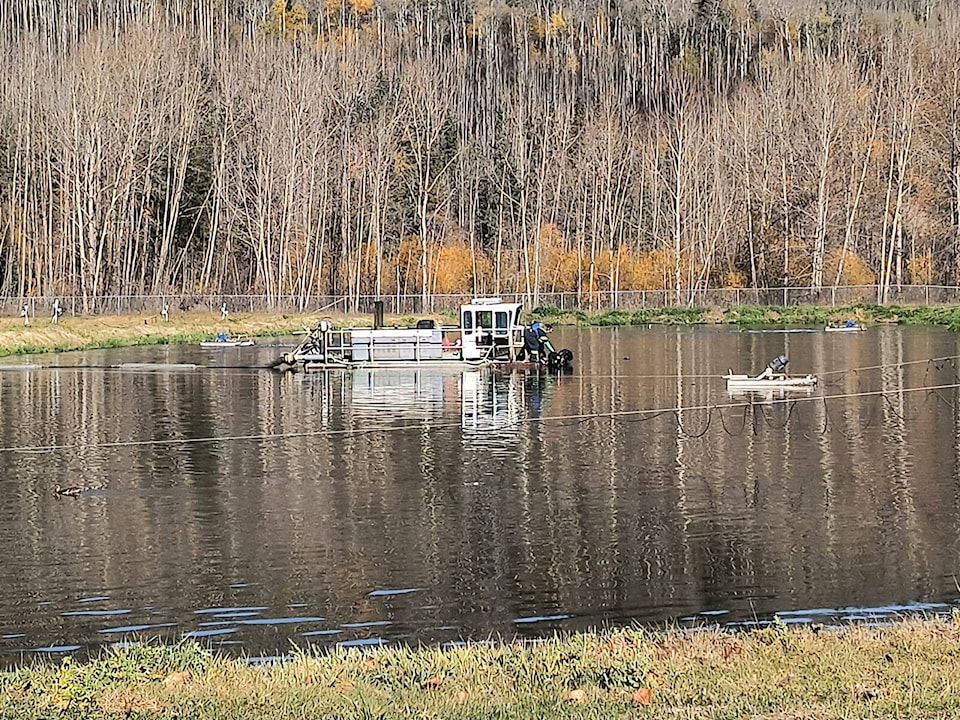It doesn’t take place every year and may only be needed once every two decades or so, but taking out the sludge from the District of Houston’s lagoon ponds is required for the ongoing and efficient operation of the wastewater system.
And the time for desludging, as the task is described, is now with an Alberta company being contracted to do the job at a price not exceeding $500,000.
The contract was let to Lambourne Environmental from Red Deer and the cost figure was released from an in-camera council session when the council held its regular meeting Oct. 3.
District of Houston chief administrative officer Michael Dewar said the process of taking sludge out of the lagoons should take about a month.
“Sludge from the lagoons is pumped into large, geosynthetic bags. The bags allow the liquid to drain out, and contain the solids,” said Dewar by way of explanation.
“The liquid is pumped back into the lagoons, and the solids remain in the bags until sufficiently dry for disposal.”
Once dry the solids can be placed in landfills, spread out over parcels of land or used as compost, he said.
“Desludging is not a frequent maintenance item, and is completed as necessary depending on sludge buildup over time,” Dewar added.
The build up in settling ponds or lagoons can contain everything from algae, algae, dirt, silt, sand, plants, insoluble metals, nutrients and biosolids. Over time, the end result can affect the normal operations of the pond or lagoon.
The District had a sonar survey cone in 2019 which showed elevated levels of sludge in parts of the lagoons.
The levels were not at the stage of exceeding provincial permits but the decision was made that the material did need to be removed.
An estimate prepared in 2019 suggested 13,331 cubic metres of wet sludge needed to be removed.
